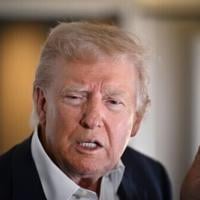US Anti-Disinformation Guardrails Fall in Trump’s First 100 Days
The first 100 days of Donald Trump’s presidency witnessed a significant erosion of established norms and practices designed to combat disinformation within the United States government and broader societal discourse. The swift dismantling of these safeguards, coupled with Trump’s own penchant for disseminating misleading or inaccurate information, set a precarious precedent and laid the groundwork for the pervasive disinformation landscape that has characterized the subsequent years. This period served as a critical juncture, marking a departure from traditional approaches to information integrity and ushering in a new era of information warfare, the ramifications of which continue to reverberate through American society.
One of the most striking developments during this period was the Trump administration’s open hostility toward the intelligence community and its findings. Trump’s public questioning of intelligence assessments, particularly regarding Russian interference in the 2016 election, undermined public trust in these institutions and created an environment where established facts became subject to political debate. This dynamic was further exacerbated by the administration’s efforts to restrict access to information, limit government transparency, and discredit journalists and media organizations critical of the president. These actions effectively blurred the lines between fact and fiction, making it increasingly difficult for the public to discern credible information from deliberate misinformation.
The burgeoning ecosystem of online disinformation, already gaining traction before Trump’s presidency, found fertile ground in this increasingly polarized and distrustful environment. Social media platforms, struggling to grapple with the proliferation of fake news and manipulated content, became potent vectors for the spread of disinformation. The Trump campaign’s adept utilization of these platforms to disseminate targeted messaging, often bypassing traditional media outlets, further amplified the reach and impact of these narratives. The lack of robust fact-checking mechanisms and the algorithmic amplification of emotionally charged content contributed to the rapid dissemination of falsehoods, often reaching millions of users within hours.
The weakening of traditional gatekeepers of information, such as established news organizations and government agencies, further exacerbated the problem. Trump’s frequent attacks on the “mainstream media” and his labelling of critical reporting as “fake news” eroded public trust in these institutions. This erosion of trust created a vacuum that was readily filled by alternative sources of information, many of which propagated conspiracy theories and disinformation narratives aligned with the president’s rhetoric. The resulting fragmentation of the information landscape made it increasingly challenging for citizens to access accurate and unbiased information, contributing to greater societal polarization and undermining faith in democratic institutions.
The Trump administration’s approach to communication and information dissemination further contributed to the blurring of lines between truth and falsehood. The president’s reliance on emotionally charged rallies, his prolific use of Twitter to bypass traditional media filters, and his administration’s tendency to prioritize messaging over factual accuracy all played a role in creating an environment where disinformation could thrive. This approach effectively normalized the dissemination of misleading or inaccurate information, making it increasingly difficult to hold public figures accountable for their statements.
The consequences of the erosion of anti-disinformation guardrails during Trump’s first 100 days have been far-reaching and continue to shape the contemporary information landscape. The normalization of disinformation, the erosion of trust in established institutions, and the increasing polarization of society have all contributed to a climate where objective truth is often contested and where conspiracy theories and misleading narratives gain significant traction. These developments pose a significant challenge to the integrity of democratic processes and underscore the urgent need for effective strategies to combat the spread of disinformation and restore public trust in credible sources of information. The legacy of this period serves as a stark reminder of the fragility of truth in the digital age and the crucial role of robust institutions and critical thinking in safeguarding against the corrosive effects of disinformation.


